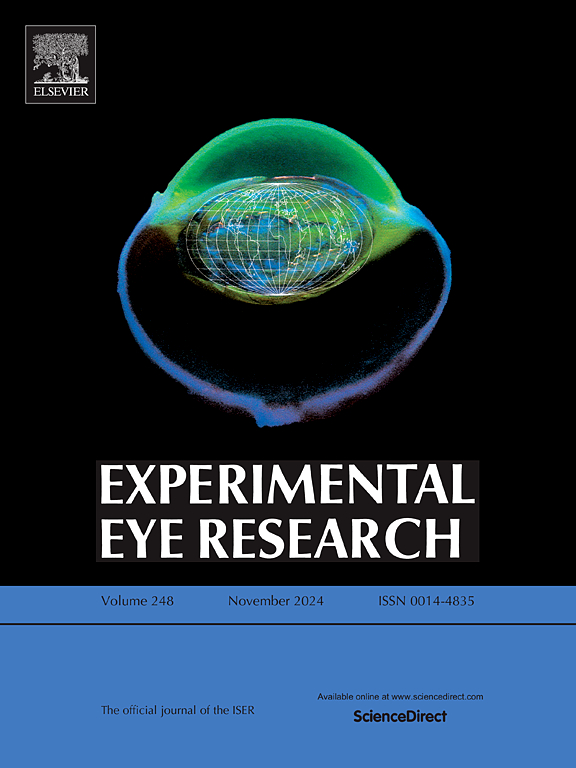Integration of single-cell and bulk transcriptomics reveals β-hydroxybutyrylation-related signatures in primary open-angle glaucoma
IF 3
2区 医学
Q1 OPHTHALMOLOGY
引用次数: 0
Abstract
The pathophysiology of primary open-angle glaucoma (POAG), the most prevalent glaucoma type, is poorly understood. Although it is well known that epigenetic factors affect the progression of POAG, the impact of β-hydroxybutyrylation (Kbhb) on POAG remains unknown. Based on POAG-related datasets (GSE27276, GSE4316, and GSE231749) retrieved from the Gene Expression Omnibus (GEO) database, four biomarkers (FABP5, GLS, PDLIM1, and TAGLN) with a diagnostic value for POAG were identified by combining differential expression analysis, machine learning algorithms, and receiver operating characteristic (ROC) analysis. Immune infiltration analysis demonstrated significant differences in the infiltration abundances of 10 immune cells between POAG and controls, including regulatory T cells, monocytes, and macrophages, with notable positive correlations between TAGLN expression and these immune cells. Subsequently, single-cell analysis revealed that GLS, PDLIM1, and TAGLN were higher expressed in chondrocytes, smooth muscle cells, and endothelial cells. In addition, in vitro cellular experiments and animal models revealed that the TAGLN expression trend was consistent with the data from GSE27276 and GSE4316. In conclusion, TAGLN may play an important role in understanding of the molecular mechanisms of POAG and exploration of therapeutic targets.
求助全文
约1分钟内获得全文
求助全文
来源期刊

Experimental eye research
医学-眼科学
CiteScore
6.80
自引率
5.90%
发文量
323
审稿时长
66 days
期刊介绍:
The primary goal of Experimental Eye Research is to publish original research papers on all aspects of experimental biology of the eye and ocular tissues that seek to define the mechanisms of normal function and/or disease. Studies of ocular tissues that encompass the disciplines of cell biology, developmental biology, genetics, molecular biology, physiology, biochemistry, biophysics, immunology or microbiology are most welcomed. Manuscripts that are purely clinical or in a surgical area of ophthalmology are not appropriate for submission to Experimental Eye Research and if received will be returned without review.
 求助内容:
求助内容: 应助结果提醒方式:
应助结果提醒方式:


